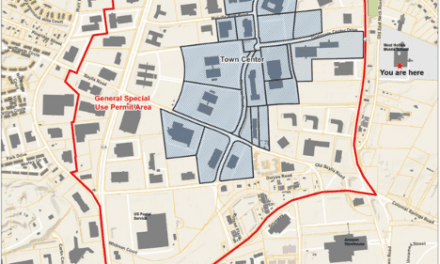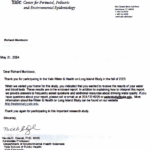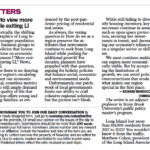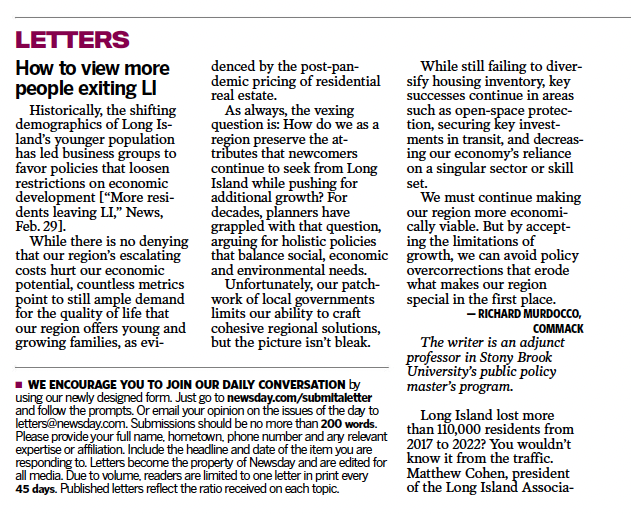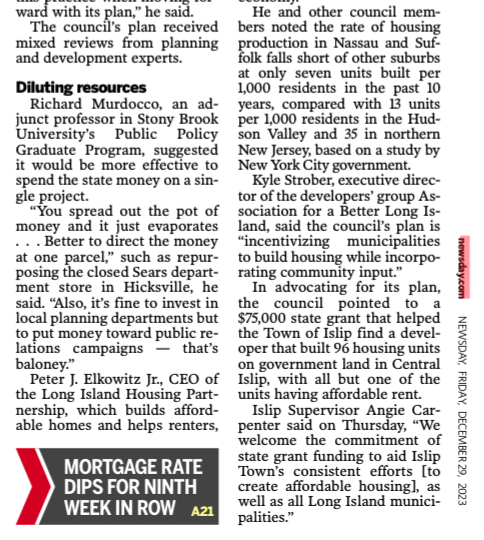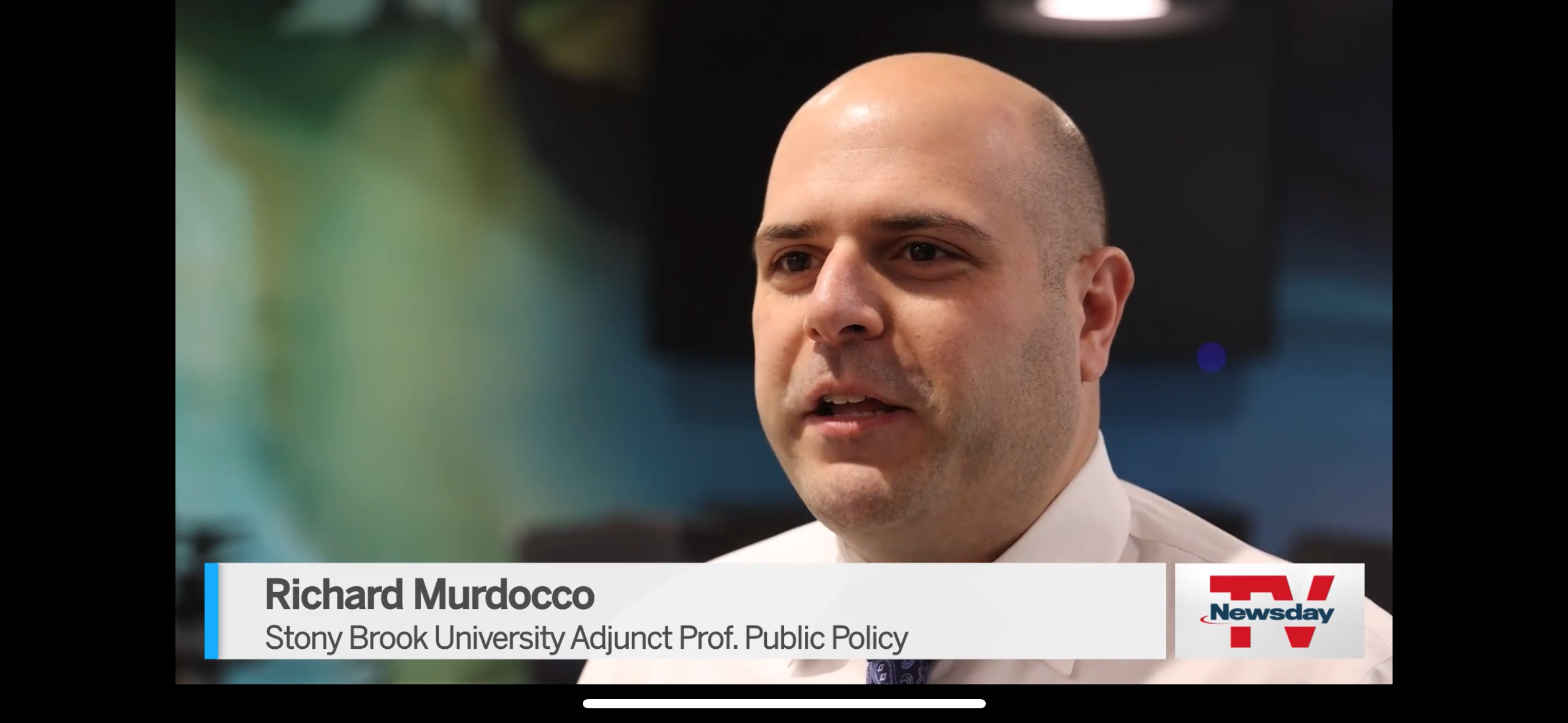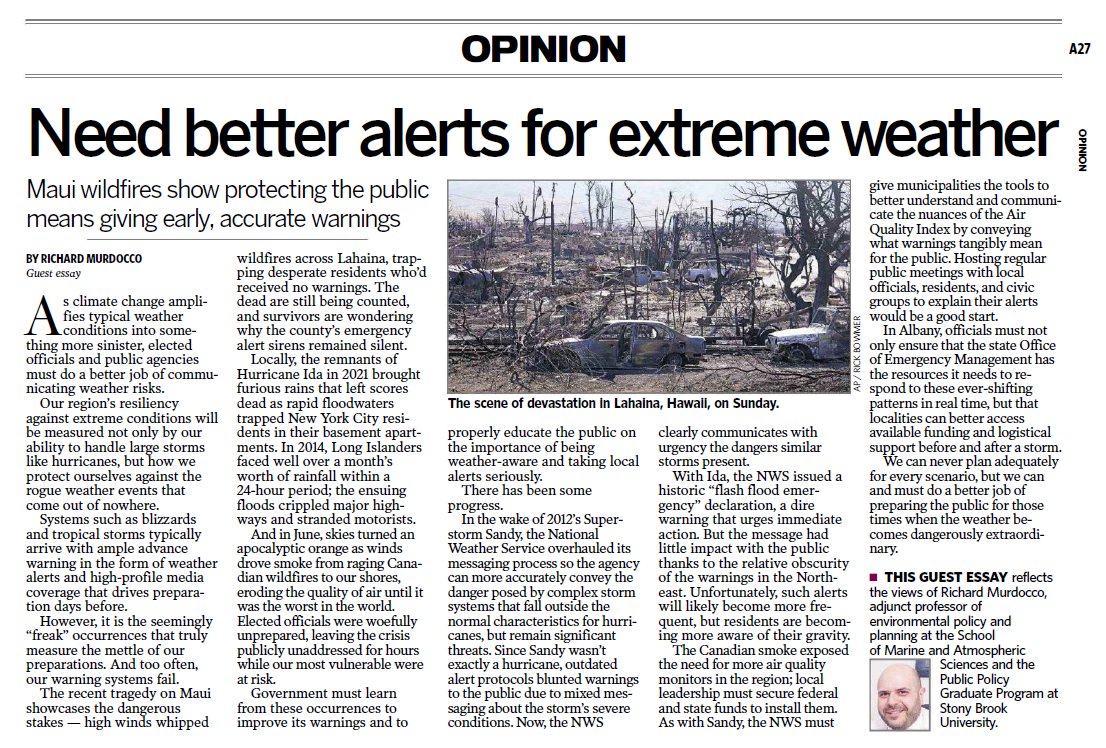As published on the NYMuniBlog on May 31st, 2011, and can be seen here: http://nymuniblog.com/?p=1173(scroll down!)
Interesting things are happening in Suffolk County’s neighbor to the west. Nassau County, has made two critical decisions recently. First, the County has decided that the Belmont Racetrack is a suitable site to pursue building a casino with the Shinnecock Nation. The proposal makes sense- the land is state-owned, allows for betting, and most importantly, the community seems to want, and even embrace the proposal for a casino. This is a rare showing of consensus in an area that is known in development circles as a land of “NO”.
Then there is the other development decision the County has made: The County is asking tax payers to ultimately support a proposal that requires the County to borrow a $400 million bond to pay for a new Nassau Coliseum. Nassau County, the same County that had to cede control of its finances to New York State. As an issue of planning and development, the decision of the County makes absolutely no sense.
Nassau’s timing for a referendum is questionable at best. The County is asking taxpayers, who have among the highest property taxes in the nation, to help pay for a sports complex while they endure freezes in County salaries, cuts in State aid to teachers and education, and to top it all off, deep cuts to public transit systems. Nassau’s bus system is fiscally limping along, but a $1.3 million vote highlights a dangerous trend in government’s philosophy regarding sports teams: keep them in town at all costs.
The costs are high. Stadiums and arenas are seen in development circles as god-given economic drivers, but Nassau County has to realize the limitations imposed on Coliseum by physical, environmental and economic factors. Physically, the infrastructure surrounding the Hempstead Hub must be upgraded in concert with whatever proposal gets selected for the site. Hempstead Turnpike (NYS 24) is already over capacity, with a level of service at C or worse, and the Meadowbrook Parkway does not fare much better during weekends or peak times of travel during the weekdays. Nassau County, as well as New York State DOT, have their work cut out for them in ensuring that the 77-acre site has adequate access by transit and car.
In terms of the environmental limitations, the aquifer is already at carrying capacity in Nassau County, and intensifying the land use to levels necessary to make the site profitable would be severely detrimental to existing groundwater conditions. As it stands, groundwater quality on Long Island is decreasing at an accelerated rate, and government must be more mindful of the environmental ramifications of such large scale proposals.
Economically, the County is being shortsighted in thinking that borrowing is the answer. It is an eventuality that the Great Recession will end, and that revenues will pick up. Nassau is a County that can’t control its own spending, and is attempting to stop the bleeding by cutting essential municipal services. With the County cutting services with one hand, the other is looking to borrow to bolster a large-scale capital improvement that will benefit private entities. Is any development at the Hempstead Hub a bad idea? Of course not, but if the developer who builds on the site must also renovate the Nassau Coliseum, than it complicates matters exponentially, and necessitates the kind of scale that Wang was proposing, and ultimately denied. This is limiting for private developers, because the renovation of the Coliseum creates the need for high density residential and commercial development. This density serves to generate enough profit to cover the costs of the renovation. Now that the public option is on the table, the cost will ultimately wind up on the shoulder of the taxpayer. Before any borrowing takes place, Nassau has get its fiscal house in order, and truly engage in the planning process.
Sound policy and planning decisions do not mix well with sports teams. Policymakers seem to think that any sports team is the key to economic success for an area, and they are willing to sell out the taxpayer in the process of keeping teams that threaten to move away if their demands are not met. These demands can be costly too: Property tax incentives that cost a municipality millions over the course of years, and if the project doesn’t work out too well, debt that outlives a sports franchise by decades. The pressure that the Islanders is exerting on the County is almost unfair. Should the team expect Nassau to borrow money for a Coliseum when NIFA controls their finances?
When it comes to sports teams, passion takes precedence over data-driven plans. Advocates for a new Nassau Coliseum will demand that expedited action be taken, but decisions of this magnitude must not be rushed. Similar to hockey, if strategy and planning are ignored, the wrong decision is made in the heat of the moment. When this type of decision-making happens, the team, and in this case, the taxpayer, will be playing catch up for the duration of the game.


